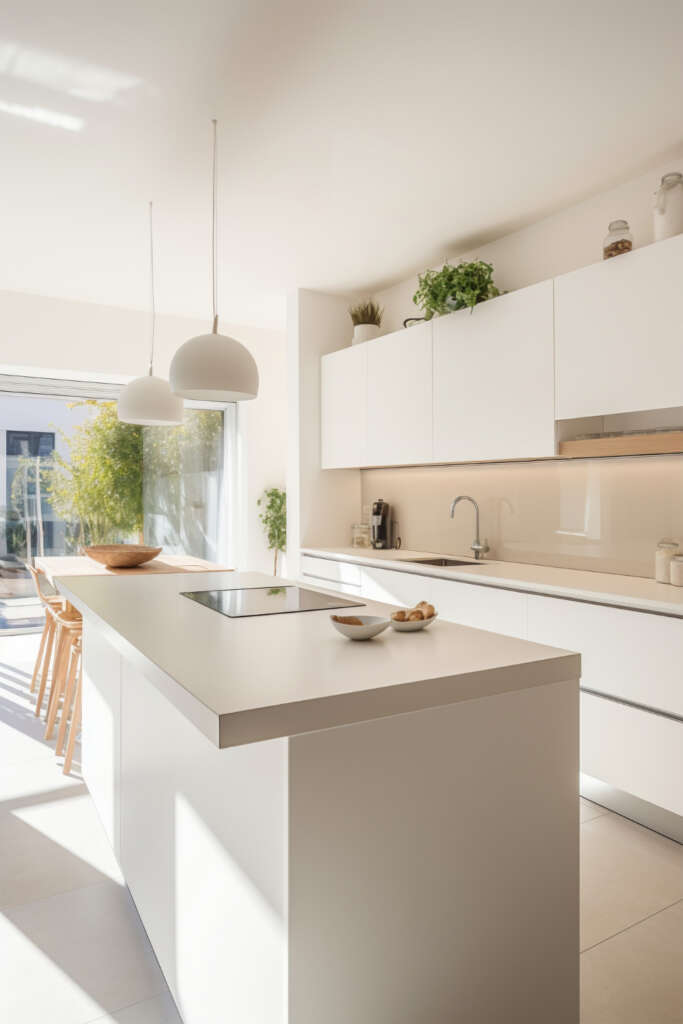
Your kitchen items can quickly pile up, whether cooking utensils are haphazardly tossed in drawers, or small appliances take up precious counter space. Taking the time to assess your kitchen and identify what works and what doesn’t will result in more organized storage solutions that work for you. Organizing your kitchen doesn’t have to be daunting. Start with these innovative ideas.
Organize by Style
Regarding kitchen organization, two significant things separate the pros from the amateurs. First, they season assertively, and second, their kitchens are organized. A well-organized kitchen helps a cook take fewer steps and make fewer mistakes while prepping food to get meals to the table in less time. Display pretty or heirloom items to keep them close at hand while also freeing up cabinet space. Consider converting an old file holder into a handy storage solution for aluminum foil, parchment paper, plastic bags, and more.
If you need more counter space, try a wall-mounted basket for storing kitchen essentials and decor. Or customize a multipurpose storage cabinet to fit your space and hold everything from pots and pans to cooking utensils and kitchen linens. Hanging a wire or wooden shelf from the ceiling allows you to store taller items like canned goods and pots, while a custom repurposed ladder adds rustic flair.
Start with a Plan
The kitchen is the heart of the home, but it’s also one of the most likely areas to get messy. Utensils tossed in a drawer and small appliances taking up counter space aren’t just unsightly—they can also make cooking and cleaning more difficult. Professional organizers recommend emptying all your cabinets and drawers, wiping down surfaces, and adding liners where necessary. This process can help you determine what items are no longer in use and how to organize best those that are.
The next step is creating a zoned kitchen system. It means dividing your cabinetry and open shelving into categories such as pantry basics, food storage, meal prep, cookware, and serving pieces. The goal is to keep like items together to save steps and time when using them. For example, having cooking utensils in a designated drawer near the stove is more efficient than fishing through a messy silverware jar. The same goes for storing cookbooks and other reference materials on a dedicated shelf.
Organize by Zone
The kitchen is one of the most highly used spaces in the home, but it can also be one of the most challenging to organize. Organizing your kitchen into zones—cleaning and cleaning products, food storage (pantry and refrigerator), meal preparation and cooking equipment, and serving pieces—will help you streamline the space. Please keep your pots and pans together in a cooking zone to avoid hunting them down throughout the cabinets. Consider a metal rack to hang your cookware, or invest in pull-out baskets or cabinet drawers to hold items like utensils, lids, and foil. Add a bin or two for dried ingredients and canned foods to prevent them from being buried in the back of the cupboard.
Similarly, store all your tableware—dishes, bowls, and silverware—close to your dining room for one-stop trips. Stackable bins and clear containers make it easy to see when you’re running low on supplies. You can also add a wall rack to hold wine glasses and a hanging organizer for rolls of parchment paper, bags of baggies, and other kitchen staples.
Organize by Color
Whether you want to embrace a minimalist style or go for an earthy country feel, a consistent color palette can unify your kitchen and keep it looking tidy. Pick a pretty pastel to add warmth, or opt for all-white to achieve clean, classic elegance. The most frequent items should be close together to save time and energy. For example, stash coffee mugs near the machine to ease groggy mornings and locate wrapping materials and plastic containers in a handy spot next to your work surface for easy access. Tricking out your cabinets with organizers and dividers can instantly double your storage capacity. For example, you can use a Lazy Susan to organize small dishes or hang a rod inside your cabinet doors to hold pot lids like homeowner Debbie Propst did in her Connecticut farmhouse. She also added a clear stick-on label for each container to make it easier to find items. Learn more about this DIY kitchen upgrade at Ashley Nicole Interiors.


